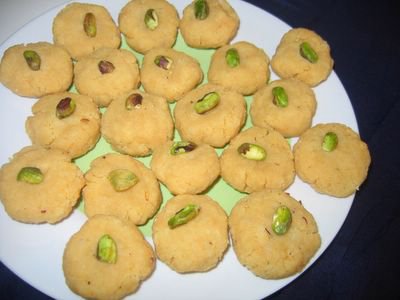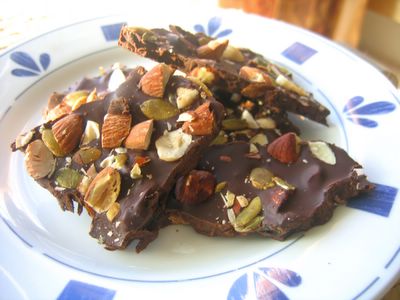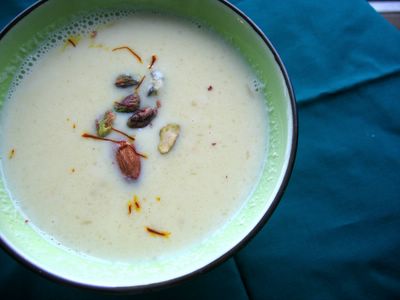
Diwali is tomorrow. So I kicked off the cooking routine for the festival today without the use of the stove. Paal khoa is milk that has been thickened with sugar and cardamom to a paste-like consistency. I still cannot forget the taste of delicious Aavin paal khoa. Making it requires patience and time. You boil the milk and simmer, it stirring all the time until it is thickened. One of our friends has arranged for a party to exchange sweets and snacks. When it comes to large-scale khoa-making, IT IS a lot of effort. So I thought I had nothing to lose when it came to try it the microwave way. Instead of condensing the milk, on the stove, a can of condensed milk goes into this. In just 6 minutes, you have a delicious paal khoa. The only work that is needed is stirring the mass every 2 minutes or so.
Although this is eaten with a spoon, I made it into small pedas for the guests to eat as a finger food. This makes about 20-25 small pieces.
Microwave paal khoa or peda
3 Cups Milk powder (non-fat is ok)
1 Can Sweetened Condensed Milk
1/2 Stick unsalted butter
pinch saffron (optional)
1/2 tsp Cardamom powder
Chopped pistachios
Melt the butter in the microwave in a microwable casserole with a lid. Add milk powder, condensed milk, and saffron. Mix well. Close the lid, microwave for 2 minutes. Remove, and stir. Add ground cardamom and mix.
Keep repeating for every 2 minutes (total around 6 minutes), until the color changes from yellow to light brown. Let them cool to luke warm. Make them into balls, and shape them to pedas. Or you can serve it like a halwa. Decorate with chopped pistachios.










